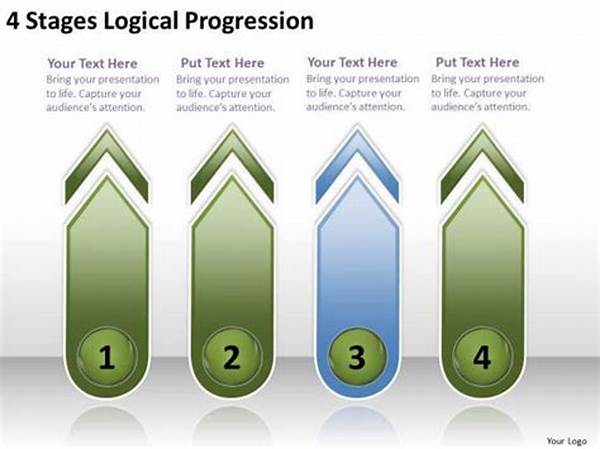Crafting a story that resonates with readers involves more than just creative ideas and vivid imagery. A crucial element often overlooked is the logical progression of the narrative. As writers or storytellers, it’s imperative to guide readers through a seamless flow of events, ensuring that each plot point naturally leads to the next. The art of sustaining logical story progression is a skill that can transform an otherwise chaotic narrative into a coherent and compelling tale. In this article, we’ll explore various strategies and insights for maintaining this continuity in storytelling.
Read Now : Apps To Find Commission Work Online
The Importance of Structure in Sustaining Story Progression
One of the foundational aspects of sustaining logical story progression is the structure. A well-organized framework helps the storyteller navigate the plot with clarity and purpose. Without this, narratives risk becoming disjointed, leaving readers confused and disengaged. Classic story structures, such as the three-act format, offer a strong basis for building stories with a clear beginning, middle, and end. This traditional approach provides a roadmap for natural story evolution, guiding the audience through character development, conflict, resolution, and conclusion. Additionally, thoughtful pacing within this structure ensures that the story progresses logically without rushing or stalling, maintaining the reader’s interest throughout.
Equally vital in sustaining logical story progression is the incorporation of cause and effect. Each event in a narrative should logically stem from preceding events, maintaining a chain of causality that propels the story forward. This approach ensures that the narrative remains cohesive and the audience can intuitively follow the unfolding drama. Moreover, character motivations should be clearly defined and justified, allowing their actions to have believable and significant impacts on the plot. By aligning character development with narrative structure, the story flows naturally, preventing any jarring leaps that might disrupt the reader’s immersion.
Lastly, consistency in tone and theme contributes significantly to sustaining logical story progression. A narrative that fluctuates wildly in these elements can leave readers disoriented. By staying true to established themes and maintaining a consistent style, storytellers provide a stable foundation upon which the plot can build. This consistency is not only reassuring for the reader but also strengthens the story’s overall impact, making even unexpected twists feel like an organic part of the narrative journey.
Techniques for Sustaining Logical Story Progression
1. Outline Planning: Develop a clear outline before drafting. This ensures sustaining logical story progression by having a roadmap that guides the narrative flow.
2. Character Development: Ensure characters’ actions align with their motivations for coherent progress. This enhances sustaining logical story progression by making events believable.
3. Causal Links: Establish clear cause and effect between events. This technique is critical in sustaining logical story progression, making the plot feel natural.
4. Pacing Control: Balance the speed of narrative development to avoid rushed or slow progress. Proper pacing plays a vital role in sustaining logical story progression.
5. Thematic Consistency: Maintain a steady theme and tone throughout. Consistency aids in sustaining logical story progression by providing a cohesive reading experience.
Creating Cohesive Character Arcs
Cohesive character arcs are integral components of sustaining logical story progression. Characters, much like the plot itself, need to undergo believable transformations that stem from their experiences and interactions within the story. This evolution should not feel contrived; instead, it must emerge naturally from the narrative’s events. Well-crafted character arcs involve an initial state, challenges that force the character to adapt, and eventual growth or change that aligns with the story’s overarching themes. This progression not only advances the plot but also enriches the reader’s engagement by providing relatable and dynamic individuals.
Moreover, character arcs must intertwine seamlessly with the main storyline to sustain logical story progression. A character’s journey should be more than just a personal narrative; it should contribute to the plot’s forward movement. Implementing changes in characters in reaction to central conflicts helps in maintaining a unified storyline. Whether the characters are protagonists facing challenges head-on or secondary players influencing the main action, their development should be nuanced and impactful, driving both personal and plot progression harmoniously.
Enhancing Storytelling with Logical Progression
Building an engaging narrative means focusing on more than just individual story components; it requires a holistic approach to sustaining logical story progression. This involves assessing the story from multiple perspectives to ensure each element supports the next. Logical progression is enhanced when all parts of the story are aligned; world-building should naturally integrate with character actions, and every plot development should feel essential to the storyline. A disjointed subplot, for instance, risks pulling the reader out of the main narrative, thereby disrupting logical progression.
Integrating subplots is another area where sustaining logical story progression is crucial. Subplots should augment the main storyline rather than detract from it. Each subplot must serve a purpose—whether it’s to offer new insights into a character, create additional conflict, or enrich the thematic depth of the story. These threads should weave into the primary narrative, providing layers and complexity without overshadowing main plotlines. By keeping secondary plots connected and relevant, storytellers ensure a unified progression that engages the reader deeply.
Read Now : “creative Apps For Aspiring Painters”
Conclusively, feedback and revisions are essential components of sustaining logical story progression. Writers should be willing to revisit their drafts, identifying inconsistencies or lapses in logic. Constructive criticism from readers or editors often highlights areas needing improvement, offering novel strategies for enhancing story coherence. By embracing this iterative process, writers can refine their narratives, ultimately achieving the logical progression that captivates and retains the attention of their audience.
Emphasizing Emotional and Logical Balance
In storytelling, maintaining a balance between emotional depth and logical coherence is a delicate yet crucial task. Emotional engagement is essential for reader immersion; however, without a logical structure underpinning it, the story risks descending into chaos. Ensuring sustaining logical story progression entails weaving emotional beats into a well-structured framework. This balance invites readers to invest emotionally in the characters and their journeys, while also feeling the satisfaction of a plot that makes sense. Addressing emotional and logical components hand in hand enriches the narrative, forging a stronger connection with the audience.
Furthermore, the dialogue within a story plays a pivotal role in sustaining logical story progression. Effective dialogue serves not only to reveal character but also to advance the plot in a believable manner. Conversations between characters should naturally contribute to unveiling the story’s direction, illuminating motivations, and reflecting the prevailing themes. Well-crafted dialogue ensures seamless transitions between plot points and prevents the story from becoming stagnant. Characters’ verbal interactions are opportunities to embed information and emotion, all while steering the narrative toward its logical conclusion.
Balancing emotional resonance and logical flow requires the storyteller to understand and execute the intricate dance between character, plot, and theme. This harmony fosters a more immersive experience, creating a story that is both intellectually satisfying and emotionally compelling. Ultimately, a narrative that masterfully sustains logical story progression becomes memorable, resonating with its audience long after the final page is turned.
The Role of Feedback and Revision
Crafting a story that excels in sustaining logical story progression can be challenging, but feedback and revision offer valuable pathways to improvement. Constructive feedback serves as a mirror, allowing writers to see their work through fresh eyes. This perspective is crucial because it can highlight areas where the narrative may falter in logic or coherence. Anomalies in plot progression that weren’t initially apparent often come to light through the insights of others. By being open to external input, writers can refine their work, ensuring each narrative thread contributes meaningfully to the overall story.
Revision is equally important in maintaining story progression. It’s a multifaceted approach that involves reassessing the story’s structure, pacing, character development, and thematic integrity. When writers engage deeply with their original work, they can identify opportunities to enhance logical consistency and narrative flow. By adjusting elements that disrupt the story’s coherence, writers bring clarity and fluidity to the progression. This iterative process might include restructuring scenes, refining character arcs, or enhancing transitional moments between major plot points.
Combining feedback with diligent revision leads to the creation of a robust and logical narrative framework. Each draft becomes an opportunity to move closer to perfection, synchronizing all elements within the story. For both aspiring and seasoned writers, embracing these practices is essential in delivering a polished work that not only resonates with readers but also stands as a testament to the artistry involved in sustaining logical story progression.
Conclusion: Achieving Mastery in Story Progression
In conclusion, mastering the art of sustaining logical story progression requires a balance of structure, creativity, and attention to detail. Storytellers must skillfully guide their narratives through well-defined frameworks while ensuring that each element contributes to a seamless flow of events. Logical progression is not merely about following a prescribed format; it’s about crafting an engaging journey that captivates readers and maintains their investment from beginning to end.
Writers who prioritize logical coherence in their narratives will find their stories benefitting from enhanced reader comprehension and engagement. By implementing clear structures, crafting cohesive character arcs, and integrating thematic consistency, writers achieve narratives that resonate on multiple levels. Sustaining logical story progression ensures that each plot point feels earned and each character development justified, enriching the reader’s experience with a satisfying sense of continuity.
Ultimately, sustained logical story progression elevates a narrative from simple storytelling to a crafted art form that resonates deeply with its audience. By weaving logical consistency into the fabric of a story, writers create a tapestry of elements that draws readers in, keeps them engaged, and leaves a lasting impact. As they hone this skill, writers not only enrich their craft but also pave the way for narratives that stand the test of time.



